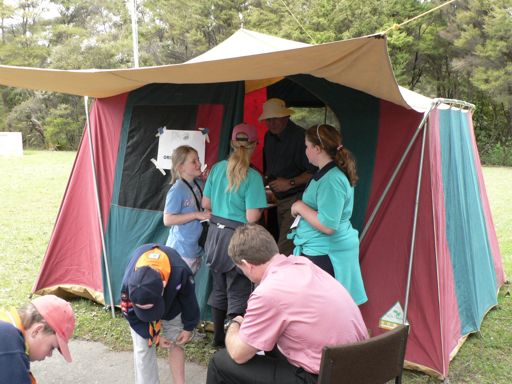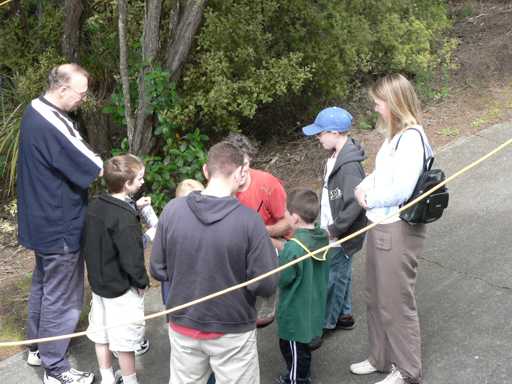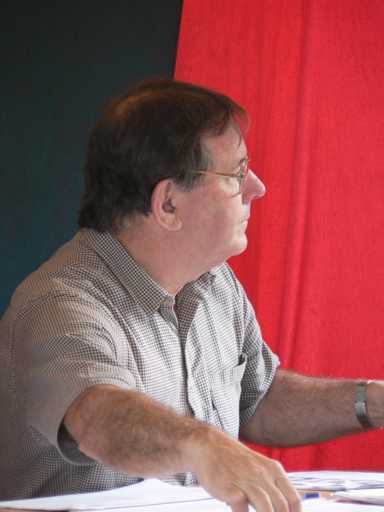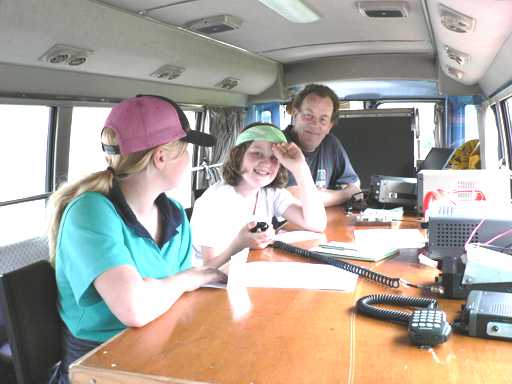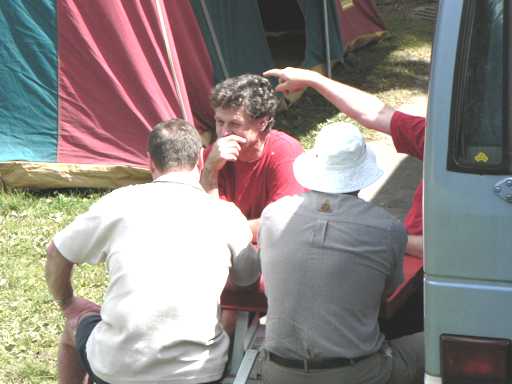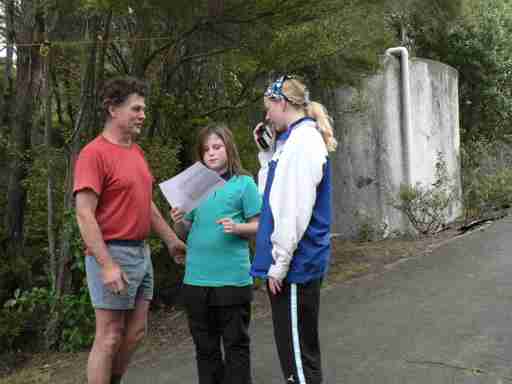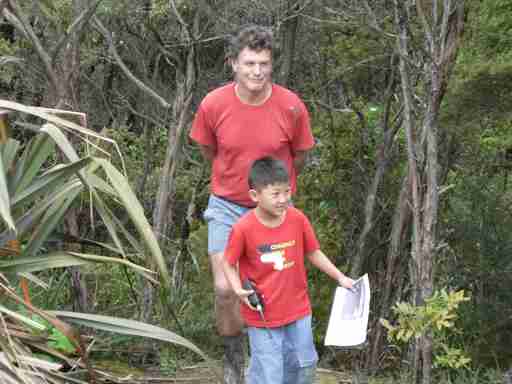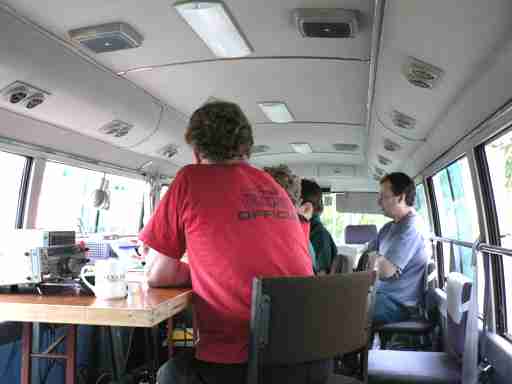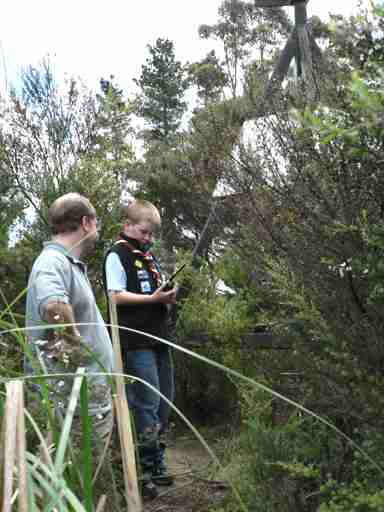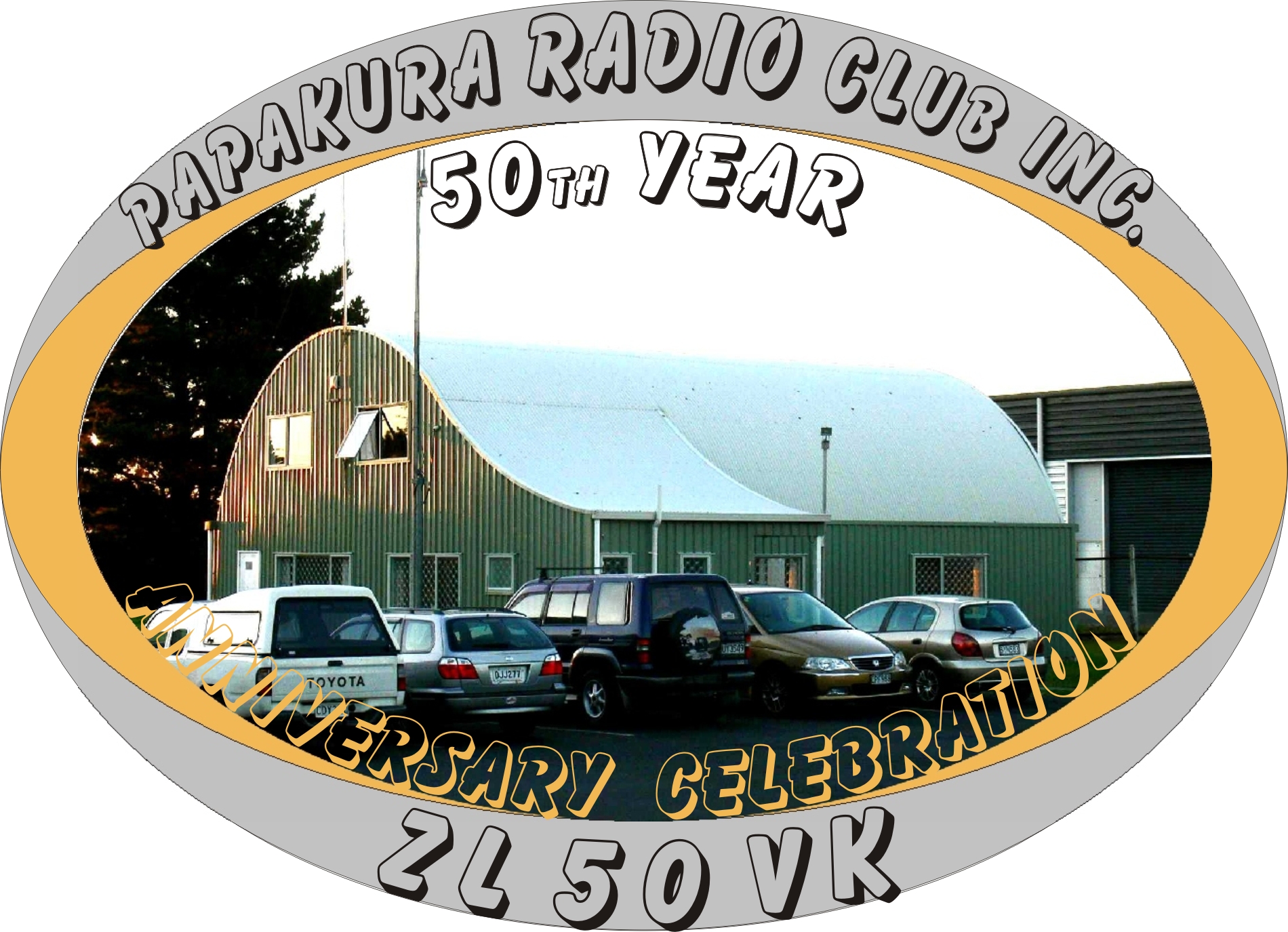
|
Papakura Radio Club inc.& NZART Branch 65, Papakura.1 Great South Road, Papakura. |
JOTAJamboree on the air, the introduction for Scouts to experience radio communications. We, as Amateur Radio operators are idealy positioned to fill the position with our vast range of activities that we can bring into action. Papakura Radio Club members have been active in JOA in past years and I'm sure we will find members willing to again in the future. Below are some details of a JOTA we assited with in Auckland. |
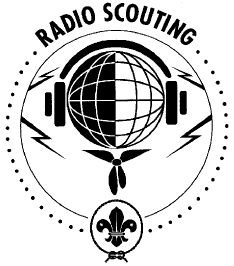
JOTA
JOTA � Papakura Radio Club clubrooms
Jamboree on the Air - 2005
JOTA � JOTI Camp Maynard
Radio Orienteering
Planning for the 2005 JOTA started some months ago. From past experience and recent JOTAs I have found you cannot rely solely on HF contacts with other JOTA stations to fully entertain the Scouts/Guides. Sadly this is an Amateur problem not a JOTA one. The last thing a scout needs the be told, 'I can remember when there was 25 JOTA stations on 80'. 'If conditions were better we could talk to the world'. As in past years it was decided to put the effort into running the Radio Orienteering Course. With other activities being planned and introduced as time and operators permitted. These included, send and receive messages via a signal lamp, identify LF beacons and mark them on the New Zealand, HF VHF UHF and echolink, making a world time clock. All the documentation for these activities had previously been developed so it was a simple matter of changing them for this year. Several weeks prior to JOTA I made a trip to Camp Maynard
checking out the site and to survey possible orienteering courses.
Armed with the digital camera I walked the camp tracks visualizing possible
courses and taking a large number of photos.
One of the first tasks when we arrived at the Camp was to test the course. David, Mark and Ian followed the course instruction I had printed out. What looks good at home will not always work in the field and a number of changes were made and more during the weekend. An 8 year olds interpretation can be completely different to ours. John ZL1ALZ
Summary Report We had a busy 2005 JOTA at Camp Maynard, Albany, Auckland We left the clubrooms on the Saturday morning at 08:30
in David�s Nissan Civilian bus loaded with tables, chairs and radios plus
personal gear for the overnight stay at Camp Maynard, which is about 3
kms from Albany. Because of the wet and soft ground conditions, the
bus was parked on the concrete next to the camp buildings which worked
out well. A tent was soon erected and this was the base for the Radio
Orienteering. Next, the mast was assembled and the trapped dipole
erected near the bus for HF activities. By then it was past 10 am
and the first cubs/scouts/guides were upon us. Mark ZL1VMF arrived
to assist Dave ZL1DK with the �Radio Chat� station.
We were set up by 10am on the Saturday morning. This camp was run as an open day where scouts (guides, brownies, cubs and others interested) came in for a period and participated in the activities. There were 12 activities at the Camp for the weekend and our two radio activities were outside, housed in a bus and a tent. The one most important understanding we all had was that this day was for the kids. We had cubs and brownies from just 6 years old through to 14 year olds. We saw around 100 scouts, guides, cubs and brownies over the JOTA weekend. Most did both the Amateur Radio Activities that we were involved in. These were the Radio Orienteering and the Radio Chat. The main radio activity provided was 'Radio Orienteering'. This was a trail or course where items needed to be found and instructions were given by handhelds, scouts reporting to base and asking for further instructions. This was very well received by the scouts and all had an enjoyable time following the clues. Just a couple of 'smart' 14 year olds became 'lost'. A separate report from base operator Ian ZL1AOX and from field controller John ZL1ALZ follow this summary. The secondary activity was the 'Radio Chat'. Due to the amount of computer noise generated from the 'Internet' activity, our radio chat was restricted to VHF and UHF. Most of our contacts were on the National System. The kids thought talking to Wellington was great and Christchurch was nearly too much to believe. A separate report from David ZL1DK follows this summary. We had an enjoyable time here and had just over 100 scouts go through the radio activities. Ian was kept very busy on the base radio for the orienteering activity while Mark and later David ran the radio chat. John walked the orienteering course nearly 30 times and Richard about 12 times. They will no doubt be still tired! I guess the obvious thing here is the change of direction we have taken in presenting Amateur Radio to JOTA. Most of the scouts were 9 or 10 with a few as young as 6 and some 13 and 14. While HF radio with the noise we had was not an option, the camp layout was ideal for the orienteering course. There was no activity after the scouts had gone home and the last to leave went around 8pm on Saturday evening and we packed up Sunday around 3pm. The organising scouting team ran an excellent camp and we were well provided for with good meals and accommodation. John has been asked to return for 2006 so there is something to look forward to. The need for a new course for the radio orienteering and also new question sheets for the radio chat activity. Orienteering Reports Report from Base Operator Ian ZL1AOX
I became the radio operator at the Base for the Radio Orienteering, assisted by John ZL1ALZ and Richard ZL1BNQ on Sunday. They briefed each team or sometimes individuals on the procedure of operating the handheld radios, and the proper radio procedure to be used. The orienteering course had been set up previously by John and consisted of 10 points named Alpha to Juliet that had to be found by listening to instructions issued from Base via the radio. These were situated within the boundaries of the 22 acre Camp Maynard reserve. John or Richard accompanied some of the younger contestants for a major part of the course which kept them fit. John would brief each group at the first checkpoint; they would then call Base for their instructions. It was useful to be able to see the first point so that problems could be checked out, like not pressing hard enough on the PTT button. Once past the first point, most of the older groups were
on their own, but it was found that some of the more �confident� participants
were the ones that got lost!
We had up to five teams on the course at the same time, but Base decided that four teams was the most he could handle at one time, with almost non-stop talking giving instructions to each group. We wrote the names of each entrant on a sheet and John reported that when Base called the group by name rather than radio number their eyes would light up wondering how Base could know their names! Each group took about 30 minutes to complete the course, and after having their book signed off they would usually proceed to the Amateur Radio Chat in the bus. We had at least 40 groups take part or approximately 100 individuals passed through our course. This was my first major participation in a JOTA activity
for about 20 years, and really enjoyed the two days and would be keen to
repeat the experience next year.
Report from Field Controller John ZL1ALZ There is no time or need for much formal instruction on
using the radios or radio procedures. It�s kept very simple. I tell
them, press this button to talk, let it go and you listen. Only one station
talks the rest listen. You only talk to the base. Identify your self by
your group number (number on the back of the radio) for each transmission.
Before you call listen, only call when it is clear. They are told how to
call the base and respond to the base calling them. This takes all of 5
minutes.
Radio Chat Report Report from David ZL1DK The radio chat station was run mainly on the National System with contacts to JOTA stations locally at Clevedon, South Auckland to some in Christchurch. The kids were astounded to find that they were talking to people in the South Island. Some thought they were talking to someone in the main camp hall. As said earlier, the constant computer noise did not allow us to really use HF for this activity though one or two contacts to VK were made. Scouts came from other activities and lined up for the radio orienteering or radio chat activity. As they came into the bus, they sat in front of the radios. No one grabbed at mics or played with the radios. They sat and listened while Mark ZL1VMF and later David ZL1DK gave a brief instruction on the PTT, Over and how to put a question. We had come prepared with a list of questions prepared so they would not get stage fright and freeze. They all started saying �My Name is XYZ and I am XX years old� The other station would reply and away they went. Many questions ended up Yes NO answers but we had tried to develop open-ended ones so a conversation would get underway. It was interesting to see how some kids fell into the swing of things quickly yet others just did not quite get the hang of it at all. Maybe just too much to take in at one time. I found that the kids who had just completed the orienteering course handled the radio chat better than those who did the chat first. I expect that those ones handled the radio orienteering better from the start. Things are vastly different from when I was a cub. Some had hobbies of �maths� and others �reading� while other played hockey, ice hockey, soccer and even competition dancing. 10 Year olds talking of enjoying the Fox Trot or Rumba! When a group of 3 or 4 came in, they passed the mic from one to another. After their chat, we signed their activity cards and off they went to the next activity. The use of the National System worked well for us and others JOTA station operators on the system did a good job in getting the kids on and then off the radio. There were a couple of instances where amateurs came up and chatted for a while only to say that they didn�t have any scouts at the time. A bit of lost radio time there for the others involved but we put all but 2 kids through but they had a good listen around on HF in lieu. While this years Radio Chat went very well we will do
a bit more planning for next time. A check in sheet, some more questions
and with luck, better HF conditions would be a good start. If, as we expect
scout numbers to increase for 2006, we will need more assistance. We are
all looking forward to 2006.
73, ZL6JAM Team. |
|
